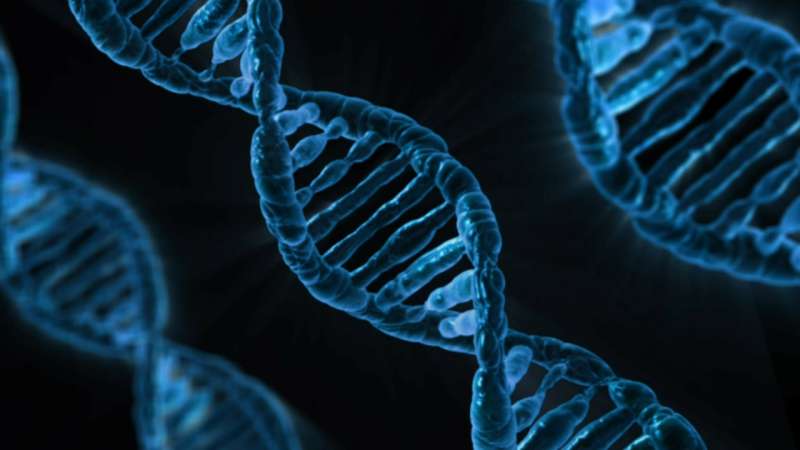Regulatory RNA essential to DNA damage response

Stanford researchers have found that a tumor suppressor known as p53 is stabilized by a regulatory RNA molecule called DINO. The interaction helps a cell respond to DNA damage and may play a role in cancer development and premature aging.
Knowing when to hold them, and when to fold them, is a critical skill in professional gambling. But it's also pertinent for cells assessing DNA damage.
It's essential for the cells to quickly ascertain whether it's possible to repair mistakes or to self-destruct for the good of the organism. That's because cells with a damaged genome often begin to flout the standard rules of growth and become cancerous.
Now, researchers at the Stanford University School of Medicine have discovered a new player in this high-stakes molecular game in the form of a novel regulatory RNA they've named DINO. This RNA molecule binds to and stabilizes a well-known tumor suppressor protein called p53 that mobilizes a cell's response to DNA damage. When mutated, p53 is one of the most infamous bad guys in the cancer world.
"It's so important for a cell to keep track of potentially dangerous changes to its genome," said professor of dermatology Howard Chang, MD, PhD. "But if cells reacted to every little ding, they would find themselves responding inappropriately—they would stop growing and maybe even self-destruct unnecessarily. You don't want to do this unless the DNA damage is severe. We've discovered that DINO is an integral part of this decision-making circuit."
A paper describing the research was published online Sept. 26 in Nature Genetics. Chang is the senior author. Lead authorship is shared by former radiation oncology resident Adam Schmitt, MD, graduate student Julia Garcia and former graduate student Tiffany Hung.
When DNA gets damaged
DNA damage is a natural byproduct of cell division because it is impossible to faithfully copy each of the 3 billion nucleotides that make up our genomes without making at least a few errors. Damage can also be caused by exposure to certain chemical agents, ultraviolet light and ionizing radiation.
Most of the time these problems are recognized and quickly repaired by the cell. That's where p53 comes in. When it is doing its job, p53 recognizes and responds to DNA damage by increasing the expression of genes involved in DNA repair and cell division. In this way it functions as a tumor suppressor. When mutated, however, p53 loses its ability to modulate the cell's response to DNA damage. Mutations in p53 are among the most common causes of many types of cancer.
Chang and his collaborators found that p53 also increases the expression of DINO. DINO, in turn, binds to and stabilizes p53 in a kind of positive feedback loop, amplifying its signal throughout the nucleus.
"Until now, most studies have focused only on proteins in this pathway," said Chang.
Fine-tuning the damage response
DINO is a member of a group of RNA molecules known as long noncoding RNAs, or lncRNAs. These molecules have been implicated in a growing number of critical regulatory roles throughout the cell. This is the first time that a lncRNA has been shown to be involved in this critical DNA damage-response pathway in living animals.
Chang and his colleagues found that when DINO expression is artificially increased, cells respond as if their DNA has been damaged even in the absence of any genome changes. In contrast, when DINO expression is inhibited, the cell responds less robustly to signals from p53.
"DINO expression allows the cell to fine-tune its response to DNA damage and respond appropriately," said Chang.
Because, as an RNA, DINO is made in the cell's nucleus where p53 is active, the researchers believe it may provide a more rapid and precise response to DNA damage than would a regulatory protein, which would be synthesized in the cytoplasm.
"Positive feedback loops are used in many applications, including engineering, to increase the sensitivity of systems and apply thresholds for action," said Chang. "We believe DINO may play role in cancer development and possibly premature aging by modulating how a cell responds to DNA damage."
More information: An inducible long noncoding RNA amplifies DNA damage signaling, Nature Genetics, nature.com/articles/doi:10.1038/ng.3673
















